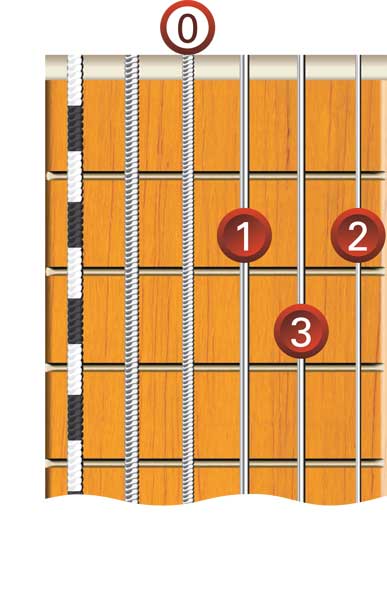
Moveable Chord Shapes in Five Forms
To become a good guitar player, it is important to have a system for identifying moveable chord shapes all over the fretboard in any key. Most moveable chord formations are closely related to the five basic major chord shapes shown below.
C

A

G

E

D

You already know the E form bar chord (root 6) and the A form bar chord (root 5). The C, G and D chords can also be used as the basis for bar chords. There are also many other moveable chord shapes based on these 5 shapes which are useful for Blues playing. The five basic bar chord forms are shown below. Notice the order of these forms – C, A, G, E and D. This order is easy to memorize if you think of the word caged.
C Form

A Form

G Form

E Form

D Form

When these five forms (shapes) are placed end to end in the one key, they cover the whole fretboard. E.g. if you start with an open C chord, the A form bar chord at the 3rd fret is also a C chord. The root note on the 5th string is shared by both chord forms. The A form chord then connects to a G form C chord beginning on the 5th fret. The root note on the 3rd string is shared by both chord forms. The G form then connects to an E form C chord at the 8th fret. This time there are two root notes shared by both forms – one on the 6th string and one on the 1st string. The E form then connects to the D form at the 10th fret, this time the shared root note is on the 4th string. To complete the pattern, the D form connects back to the C form at the 12th fret. The shared root note between these two forms is on the 2nd string. This C form is one octave higher than the open C form. After this, the whole pattern repeats. The example below demonstrates all five forms being played as C chords.
